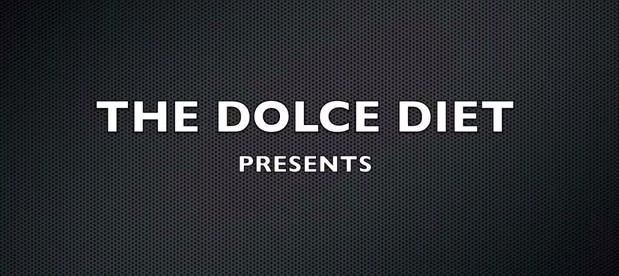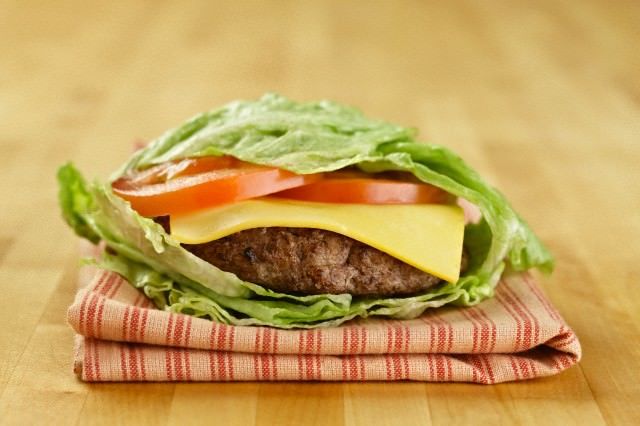By Jonathan Shrager
Though he first landed on our radars as a competitor on TUF 7, fighter/trainer Mike Dolce has become much more famous for The Dolce Diet — the health and nutrition system he employs to help MMA stars hit their weight limits while retaining peak performance on fight-day. Fresh off his wizard-like guidance of Thiago Alves earlier this month, we decided to get the Living Lean author on the phone to find out exactly how he does it. Enjoy…
JONATHAN SHRAGER: Hi Mike, thanks for taking the time to talk with us. You are arguably the most renowned nutritionist in MMA nowadays.
MIKE DOLCE: Well, thank you. I prefer “performance coach” actually, but people often refer to me as a nutritionist because I’ve become synonymous with The Dolce Diet, so I understand why. I do quite a bit, including nutrition and Strength & Conditioning.
So who is the current crop of fighters that you’re working with?
Thiago Alves, of course, with whom I travelled to England. Chael Sonnen, Vitor Belfort, Jake Ellenberger, Jay Hieron, Mike Pyle, and I started working with Jorge Masvidal in advance of his Strikeforce lightweight title fight with Gilbert Melendez. Jorge is a great guy and a super-talented athlete.
I recently interviewed Jorge, and he confessed his love of junk food including McDonald’s. Have you ever caught him attempting to eat any junk food behind your back? Is his love for McDonald’s difficult to contain?
Haha! No, Jorge is very committed to performing at the top of his potential. He is so dedicated to his craft, there is nothing to pull him off course. But he did admit his love of McDonald’s to me and we agreed that would be his victory celebration.
Post-fight, do you allow your fighters a little leeway to have a week off and eat what they want? Do you yourself ever celebrate with the fighters by eating some greasy or sugary foods?
Yes, I employ a principle of earned meals, a concept established to allow athletes or individuals to enjoy a meal that may not be consistent with their goals. For my athletes, I usually give them until Wednesday after the fight to ignore my phone calls before we start dialing their lifestyle back in. The great thing about guys or girls who follow The Dolce Diet, is that they lose the old cravings for junk and instead just look for larger portions of what we’ve been eating all camp. After a fight, I’ll usually indulge in a burger or slice of pizza with the team, but that’s usually because we don’t leave the venue until after midnight and our options are limited.
Following his fight with Frank Mir, Dana White suggested that Roy Nelson should try to make 205 lbs in an attempt to rejuvenate himself and his career. Roy subsequently claimed that this would require him to lose a limb, but now he says he’ll try to do it if he gets enough Facebook fans. Would you be the man to help Roy shed the belly?
Well, I don’t want to use Roy’s name specifically, but when I worked with Rampage, he began his training camp at 255 pounds, and he made 205 pretty easily. Quinton is shorter than Roy, and Roy, at his heaviest, weighs 260 pounds. So, if Rampage can achieve it, and he probably has more muscle, then I think it’s safe to predict that Roy could make 205.
And do you think that 205 would prove to be Roy’s optimal fighting weight?
I think that Roy looked great in his fight at heavyweight against Cro Cop. With that being said, I think he’s fine at heavyweight. What makes a guy like Roy so special is that he could fight in two different weight classes. If he doesn’t have to lose the weight then why should he? I’m a health advocate more than a performance coach, so being healthy is the most important thing.
After working with Quinton Jackson prior to the Rashad and Machida fights, you weren’t part of his coaching staff in the build up to Jon Jones. Are you and Quinton on good terms?
The schedule has really become a problem. I don’t leave guys that retain my services for somebody that may have a higher profile. I was booked before Quinton’s fight with Jonny Bones, and Quinton understands. He and I had a great conversation in which he told me that he knew this issue might arise because of my talent in the area of health, nutrition, and fitness. It’s not a bad problem to face, but unfortunately I’m not able to work with everybody for every camp. I have been booked solid for up to four months but I prefer not to commit to anything too much further in advance.
How does your role work logistically if you collaborate with multiple fighters? Do you focus solely on one fighter at a time during their training camps?
I do work with one athlete specifically, and then I’ll work with a couple athletes as close as I can. I was living with Thiago prior to his fight in the UK against Papy Abedi, but also Jake Ellenberger, Chael Sonnen, and Gray Maynard all fought during that timeframe. So, I would leave for their weight-cuts and the weigh-ins, to be present for the fighters at the last hurdle. But throughout the entire process I would consult with the fighters on multiple occasions every single day. Fighters text me their weight upon waking up, and how they’re feeling during the day, so it’s a hands-on process. I work with ten athletes consistently, but the one who books me first is the one I’ll physically be with throughout the training camp.
Is weigh-in day even more stressful for you than fight night?
For me it is. My job focuses on the health and peak performance of my athlete. The scale inevitably stands in the way of that main objective. We must fulfill the contractual obligation to weigh in at a predetermined weight — usually much lighter than the athlete normally walks around at — without doing any harm to their body, which would adversely affect performance. Once we get by the scale, everything else is a breeze.
What’s the most drastic cut that you’ve had to help a fighter achieve?
I helped Duane “BANG” Ludwig lose over 40 pounds in less than two weeks to take a short-notice fight against Jim Miller in January 2010. What made that cut even harder is that Duane fought in early December, went on vacation with his family and fully embraced the typical holiday menu. But, Duane is such a strong individual, it is doubtful any other athlete could have done that. I have had other guys lose nearly 60 pounds in less than eight weeks. Of course, health is always the most important factor and we strive to accomplish such goals in the healthiest manner possible.
I saw Mike Pyle eating a Nutella and banana sandwich on rye bread during one of his blogs, as recommended by “The Dolce Diet.” Are there any other foods which you recommend that people may be surprised by?
Most people are actually shocked when they read my book, The Dolce Diet: Living Lean, because of all the recipes it contains that I use with my athletes. We have pasta, pancakes, omelets, fried chicken, and many other delicious meals. The difference lays in my selection of ingredients and the preparation techniques that turn garbage into gold. Anyone can eat boiled chicken breasts and steamed broccoli but my approach is to embrace the natural flavor of whole foods, which is why guys like Belfort, Alves, Rampage, Maynard, Ellenberger and many more of the sport’s elite chose to work with me. I add enjoyment to an otherwise Spartan existence.
Would you relish the challenge of working with fighters who are notorious for missing weight such as Paul Daley?
I don’t necessarily relish the challenge of “who can drop the most weight,” but instead embrace the duty to help these guys achieve their goals while maintaining a vibrant state of health. I am first and foremost a longevity advocate and my number one priority is to keep these guys healthy. In my view, the healthier an athlete is, the better the athlete will be able to perform. This is why I employ a whole-foods method combined with intelligent periodization and restorative methods to produce world-class performances. This, I believe, is the future of peak performance.
You work with a lot of Brazilian fighters, and Chael Sonnen. What are your Brazilian clients’ opinions on Chael and his recent remarks about their country? Is Chael as funny behind the scenes when you are working with him on a daily basis as he appears to be on camera?
Chael is a polarizing character, but most of the people I talk to love what he is doing for the sport. He creates excitement outside of the cage and certainly backs it up when he steps inside. Of course, some people don’t like a few of the things he says, but the general consensus is that he is hilarious. In my own experiences with him, Chael has a great sense of humor, a warm heart, and actually, a brilliant mind. I would put him on stage with Howard Stern, John Stewart, and Bill Maher, and have full confidence that Chael would talk circles around those guys.
Follow Mike Dolce on Twitter @TheDolceDiet, and pick up his book Living Lean on Amazon.com!











 Duane Ludwig: Well I’ve known Mike Dolce for three years and I’ve used him to make the cut to ’55 and it wasn’t for him, I probably wouldn’t be making 155 for my last couple fights but it’s just too much of a stretch and a struggle to make 155 that my focus was always on the diet and not on getting better as an athlete so I decided to go to 170 based on quite a few people’s recommendations including Mike Dolce and no matter what weight you’re fighting at, you want to do it correctly and the Dolce Diet is what’s done correctly. If you follow on that and stick to it, you can be the best athlete you can be nutritional-wise which is definitely for health for sure, you definitely have more energy, your attention and attentiveness for training, the fight itself and the recovery aspect. There’s a lot to the Dolce Diet than just losing weight. It’s also making sure you have proper weight and the ideal weight no matter what weight you want to fight at. You get the ideal performance anyways.
Duane Ludwig: Well I’ve known Mike Dolce for three years and I’ve used him to make the cut to ’55 and it wasn’t for him, I probably wouldn’t be making 155 for my last couple fights but it’s just too much of a stretch and a struggle to make 155 that my focus was always on the diet and not on getting better as an athlete so I decided to go to 170 based on quite a few people’s recommendations including Mike Dolce and no matter what weight you’re fighting at, you want to do it correctly and the Dolce Diet is what’s done correctly. If you follow on that and stick to it, you can be the best athlete you can be nutritional-wise which is definitely for health for sure, you definitely have more energy, your attention and attentiveness for training, the fight itself and the recovery aspect. There’s a lot to the Dolce Diet than just losing weight. It’s also making sure you have proper weight and the ideal weight no matter what weight you want to fight at. You get the ideal performance anyways.